
By Lee David Hamberg
The service of most soldiers is fairly well doc-umented. The United States government has made a conscien-tious endeavor to document all of the military service of its citizen soldiers since the American Revolution (1775-1783). Despite this effort, there are always omis-sions. One exam-ple of this is Roger Moore, who has always been con-sidered a soldier of the Revolution, but whose service was never compiled. This writing helps to fill in that gap.
When the Revolution broke out, Roger Moore’s home was located in the “Jog,” also known as “Mooretown,” because of the several Moore (or Moor) families that lived and owned property there. It was part of Simsbury, Con-necticut, which took in Granby, East Granby, the Southwick “Jog,” Simsbury, and Canton. By 1776, Simsbury had its own regiment in the Connecticut militia system. Ideally it had 728 men, but it could have been only half that num-ber. The Tenth Company of the Eighteenth Reg-iment predominantly consisted of men from Mooretown and the immediate vicinity.
When the 18th Regiment was called out on August 14, 1776, Joseph Moore, father of Rog-er, was a lieutenant in the tenth company. He and his fellow soldiers marched to Kip’s Bay on the East River, just northeast of New York City. Their mission was to defend the City of New York. Joseph Moore was captured there on Sep-tember 15, 1776, and died a prisoner of war on November 3. Roger was not included on the list of soldiers who served at that time.
On the following April 26, 1777 the British marched into Danbury, Connecticut to destroy military stores there. While arms and ammuni-tion were not listed, other valuable provisions were, including 3,000 barrels of pork, 2,000 barrels of grain, 1,600 troop tents, 1,000 bar-rels of flour, 100’s of barrels of beef, plus oth-er supplies. Because they were stored in vari-ous buildings, the British burned 19 houses, 22 barns and stores, and the Danbury Meeting-house (church). The smoke could be seen for miles, and the melted pork fat oozed into the rutted dirt roads, and was deep enough that it went over your shoes! In May, Roger Moore and some other members of the Connecticut 18th Regiment of Militia were drafted into the Con-tinental Army under Captain Noah Phelps of Simsbury to march from Simsbury to New Ha-ven to Danbury to respond to the British attack. By the time the Connecticut troops arrived, the British soldiery had long since vanished. After 4 or 5 days of service, the troops were dismissed to return home... but not for long.
In late July or early August of 1777 the unit was again called out, this time to patrol the lower portion of eastern New York State, in-cluding Fishkill, Rochedale, White Plains, and Eastchester. In the latter village the troops were involved in several skirmishes with British scouting parties. While there were no known injuries, it was still seen as serious business. Even a lucky pot shot could have resulted in the lowly grave. Sometime in early September the British threat was considered low, and at the village of Crompond in Yorktown the troops were discharged.
On at least one occasion during the war, Tues-day December 22, 1780, the Tenth Company of the 18th Regiment met at Moore’s House at 86 College Highway, and held elections for a new lieutenant. Moses Dibol (Dibble) was selected. Dibble lived on present-day Mort Vining Road. Adonijah Burr was the Company Captain at the time. The scrap of paper with that information is in the Connecticut State Archives.
The reason that we know of this service is be-cause years later Roger Moore was asked to sub-mit affidavits to validate the service of Reuben Clarke, Richard Gay, and Seth Hayes. Moore could do that because he was a participant with them. Their pension files, including the Roger Moore affidavits, survive in the National Ar-chives and are available on-line at www.Fold3.com. The Congressional Pension Act of 1832 allowed soldiers (and their surviving spouses) who served in militia units for six months or more to apply for a pension. We don’t know if Moore served additional time during the war or not. In his old age he was financially comfort-able and did not apply for a pension.
After the war, the militia system was kept in place. Local companies periodically met, elect-ed officers, and drilled. Officer commissions for Roger Moore show that he was elected lieuten-ant in 1787 and as the captain in 1793. By Sep-tember of 1802 he was exempt from service due to age (61 years old). It’s too bad that better mi-litia records weren’t kept, but we are fortunate to know from the surviving records that he did indeed play a small role in the Revolution that led to the United States of America.
By Clifton (Jerry) Noble Sr.
The engineering exam for Massachusetts Civil Service and Public Works qualified me for permanent appointment in a grade 5 position as Assis-tant District Survey Supervisor. However, I spend only a couple early morning hours, twice a week, in the Greenfield District Office. While this involves dis-tributing directions, notebooks and plans, it also means get-ting time sheets out to survey men and back in again for the Boston office, as well as delivering paychecks to the 16 guys in my 4 south-district parties. Because of the amount of actual bridge and highway construction it seems best for me to spend most of my time helping and work-ing with the crews as I am familiar with all the projects. Steel beams are being spanned across Suffield Street in Agawam for the new Route 57 overpass, and elevations need to be taken on the quarter points so that when deck load presses out their camber the road grades can be figured and set accurately.
My state car as well as the parties’ carryalls need anti freeze as well as tires and tubes so I’m getting acquainted with Ed Conway at the district’s stock building in Northampton. Per-mission has to be gotten from Joe Yablonsky at District Office for all vehicle repairs such as headlights and brakes.
When special town information is needed, as from Armand Foote in Agawam, I am the go-getter. Cliffs are being blasted for rebuilding Route 57 down the gorge in Granville. There is so much difference in elevation from the low north side of the road to the high south side that the only practical way to record it for quantity purposes is for transit men to measure vertical angles as well as taped distances to a level rod. Steve Golas is resident engineer for construc-tion so I delivered slope sheets to him. He keeps his office trailer locked even to his own depart-ment assistants. ODD! On a recent visit to him he was the only person ever to call me “stupid.” UNFORGETABLE!
November 4, Saturday. I started the gasoline motor at the brook to pump water 400 feet up to fill the little reservoir behind the well house. Collins has sold his piano to the boy who rakes their leaves. While at the brook I too off jacket and dungarees and washed them. Left wrist-watch on a rock and had to go back for it with flashlight. Slipped on leaves going down bank and sprained left thumb.
November 5, Sunday. Started brook pump again to give more water through ground to well. Selected next week’s hymns. At 9:30 at Sarah Gillette Home got mother Hester and she rehearsed with my choir. Mrs. Joseph Webb, Elsie, arrived from Chester in her Fleetwood #47800 to sing with us. She started coming be-cause she is cousin to Bill Call, our first minister. Mother Atwater phoned that they will save me a trip by riding up to take Hester home. Uncle David Atwater drove his Mustang up also. He had trouble in new gravel above Rusin’s. He thought his clutch was gone. I went over with him, and, from tracks in the road, I think he spun his wheels. Walked home. I used up gas in pump and disconnected 400-foot pipe.
November 6, Monday. I left for Greenfield at 6:49 and got to office in 61 minutes. Showed Ed Blake how to figure deflection angles for any highway curve on electronic calculator. John Manzi jockeyed again yesterday but his horse was stodgy. Dean Amidon is nearly ready to move his equipment from South End Bridge up to new office on Mill Street Agawam where he will be resident engineer for the next section of Route 57. Nurse Jean Watson did our washing at the glen. I took a gift pedometer up to Ken-neth Allyn who hikes a lot too.
November 8 Wednesday. Found four copies of Good Business Magazine with my article in Post Office box 393. Mrs. Bodendorf came and cut E’s hair. Baby didn’t recognize his mother with haircut and roared. I talked fast and got him quiet during supper.
November 10, Friday. Woke at 6:05 a.m. and left for work at 6:48. Stopped at maintenance storehouse in ‘Hamp and got antifreeze for Bob Fay’s carryall from Ed Conway. Men com-plained about not having today off because Ar-mistice holiday comes tomorrow on Saturday when we don’t work anyway.
November 11, Saturday. I did the ironing. 9:45 I went to Westfield and took my mother to ride through Suffield. At home I phoned Mrs. Hall for a burning permit. Baby stays quietly in his playpen for long periods. He rolls around and kicks and says his only word,”ningy, ningy,ningy.” To laundry 4:45 p.m. High school classmate Bob Beneway came in. He has got a rent in Crescent Mills.
November 12, Sunday. Bruce Morgan was back as minister at church. Elizabeth made a nice lunch with turnip as vegetable.
November 13, Monday. I had to start old state Ford by rolling it down the hill. At home I made three trips to brook with water pails. Well water is only two feet deep.
November 14, Tuesday. RAIN. Took advantage of weather to teach algebra to John and Al Ka-cavich. John Manzi never graduated from high school, but he learns fast. At SGH Hester was getting a package of her decorated paper for Mrs Dillon. Mrs Dillon, telegraph operator, says my wife, is the “sweetest girl in Westfield.
November 16, Thursday. All steel is up on Suffield Street’s south bridge. Fits perfectly. Both E and I thanked God for the steady rain that began this evening at 7:50.
November 18 Saturday. Nothing was frozen so ran brook pump to help well.
November 19, Sunday. Thanksgiving an-them went fine. Elsie Webb sang.
November 20, Monday. Met first heavy snow storm in Hatfield. On way home found snow slippery on our road. Had to slow for Mrs Rusin getting up from fall. Lost momentum and got stuck. Had to shovel wheel tracks. Finally made it home and shoveled drive till 11:30 p.m.
November 21 Tuesday. Supervisor George Berry okayed getting headlight and brakes fixed so got Sarats to do the work. Baby weighs 17 pounds 6 ounces. He’s 7 months old today
November 23, Thanksgiving. Took junk to dump. Elizabeth cried. Missed seeing brother Shipley.
November 29, Tuesday. I left men taking el-evations on Suffield Street bridge seats and took car to Sarats to get leaky heater valve replaced. They used two gallons of their antifreeze which I shall have to return from DPW storehouse. Did so Wednesday.
November 30. I worked with men on Mill Street connection to Rte 57. At noon stopped by Colliseum so John Manzi could get tickets for son and self to Ice Capades. Waited from 7:30 to 7:55 for dryer while three with clothes in the stood idle. Got owner Ralph Sheldon to oust couple from his Glen bar next door to get clothes out of idle dryers so those of us waiting could use them.
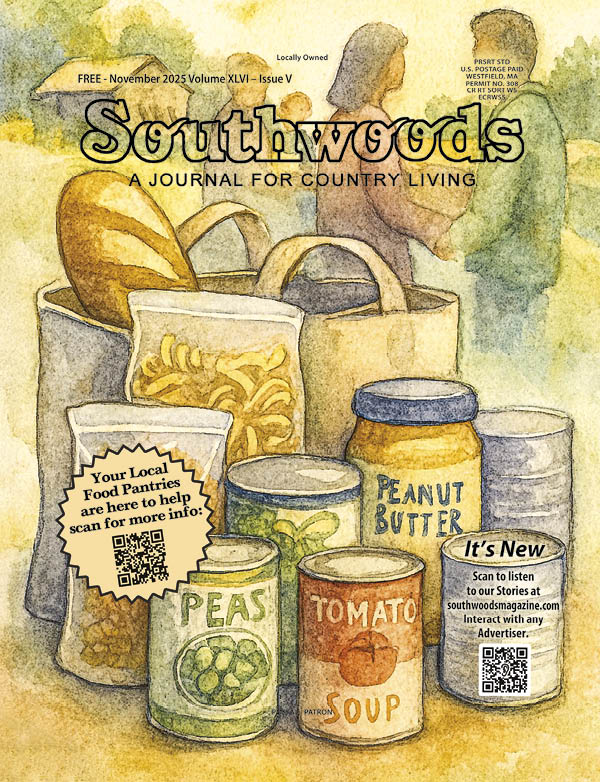
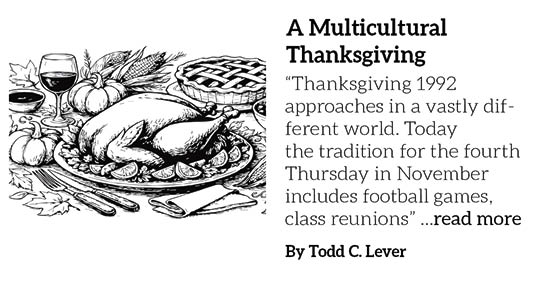
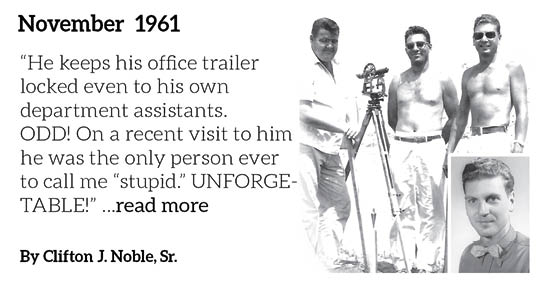
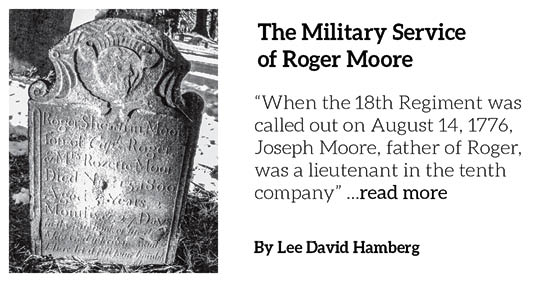
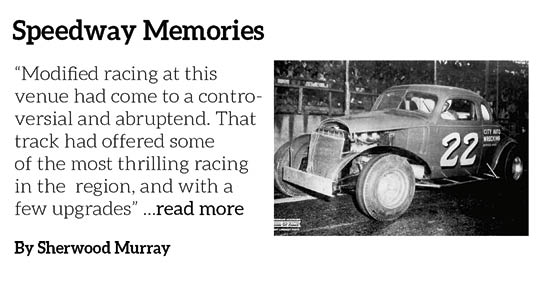
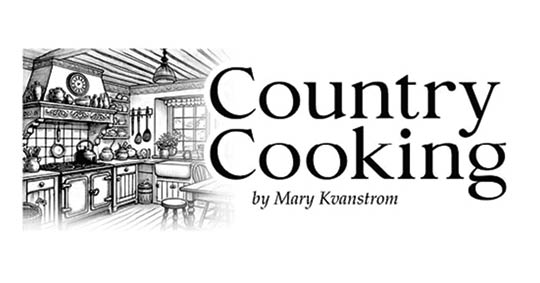
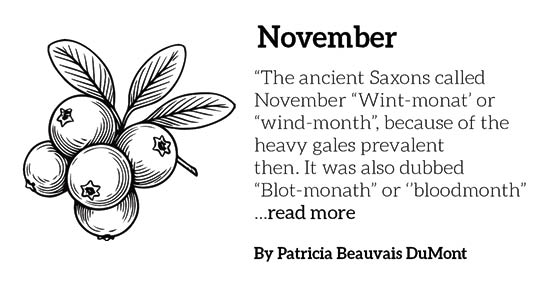

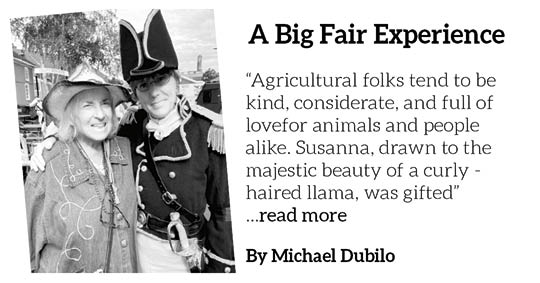





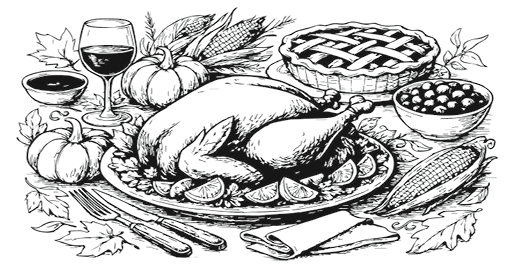
I think its fairly safe to say that as children, we were all presented with the textbook image of the first Thanksgiving. The scene that we share of that meal in 1621 is of Pilgrims and Indians rejoicing around the same table. Together, they were being thankful for a bountiful harvest and having sur-vived through a horrible winter the year before. Its quite likely that many of the Pilgrims that day were also expressing their thanks for finding a place where they could freely practice their reli-gion. Back across the Atlantic, they had been per-secuted for wanting to believe in a way different than the teachings of the Church of England. The first Thanksgiving was very much a celebration of freedoms: freedom from discrimination, freedom from want of food, freedom of life.
As the story has been told, the Indians of the Plymouth area had befriended the immigrants from England in a time of great need. The Pilgrims had brought little food with them,and through the help of their Native American neighbors were able to survive the first winter and learn about what foods they could harvest from their new homes. Around the first Thanksgiving table, there was a genuine feeling of goodness toward one’s neighbor, regardless of who you may happen to be sitting next to.
Thanksgiving 1992 approaches in a vastly dif-ferent world. Today the tradition for the fourth Thursday in November includes football games, class reunions, Butterball turkeys and watching that certain movie that’s on each year. For those who are lucky enough to have family and friends over for the “traditional meal”, they are often confronted with an assortment of vegetables and desserts that wouldn’t have been imagined at the meal in 1621. Tough family tensions do exist at some tables and the food may not be as plentiful at others, a genuine feeling of thankfulness and hope for the future does still seem to pervade the Thanksgiving of 1992.
The hopes of many on this holiday will sadly be for a future filled with the same freedoms that were celebrated by those at the first Thanksgiving: freedom from discrimination, freedom from want of food, freedom of life. Some of 1992’s traditions will include going to see the movie Malcolm X, which will portray another view of discrimination and the struggle for the true neighborly equality that existed at the first Thanksgiving. Others will get together for their once a year trip to the soup kitchens and homeless shelters to serve dinner to their neighbors in need. And a few maybe spend-ing the day in the hospital, sitting by the side of a loved one who was the victim of violence, praying for the freedom of their life.
Thanksgiving will be spent in many different ways this year. Remember the ideals of the first Thanksgiving, and hope they soon return to the land the Pilgrims called home.
Thanksgiving
Thanksgiving

November 1992
A Multicultural
By Todd C. Lever




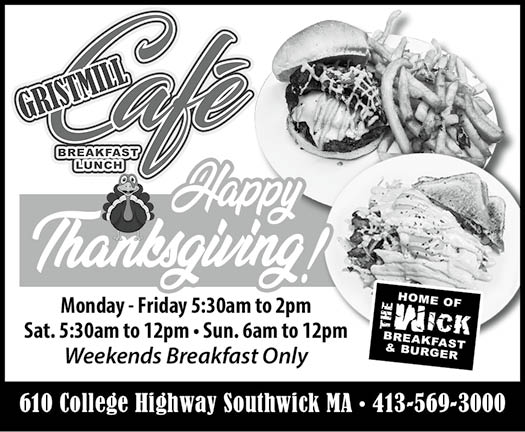






November 2014
November
1961

L to R:
Bill “Butch” Dwyer,John Manzi, C.J. Noble
Baby Jerry with “the sweetest girl in Westfield,” his mother Elizabeth.
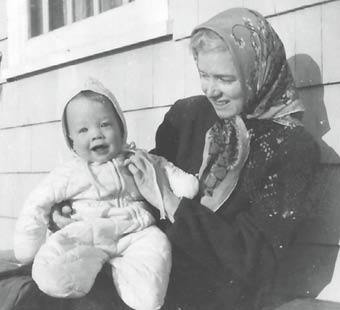







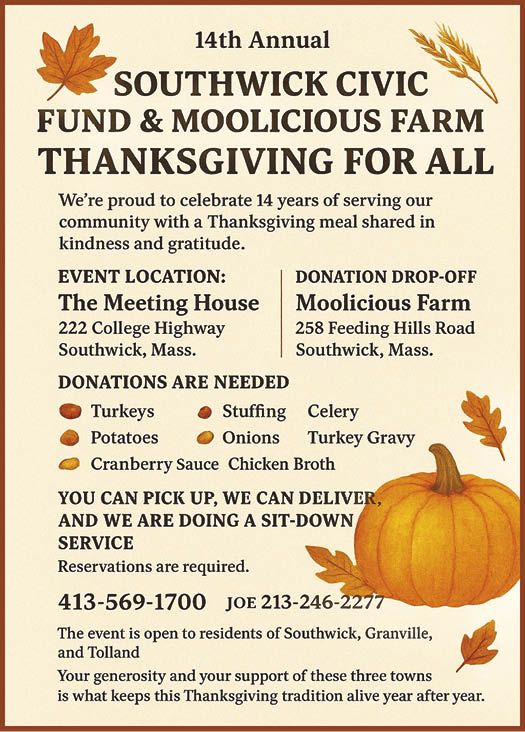




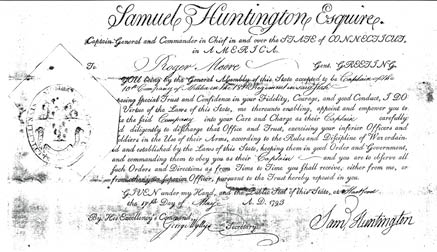
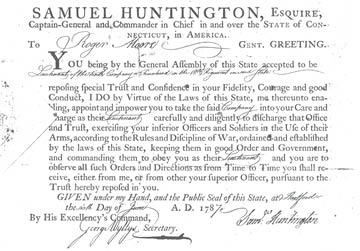

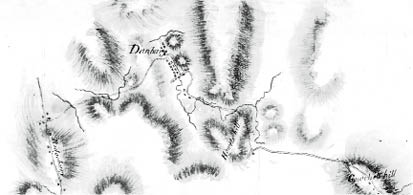
Above: Topographical Map from the Revolutionary Era of Danbury CT
Officer Com-missions given to Roger Moore. Right is his Lieutenant rank-ing and above is Captain rank.
The Military Service ofRoger Moore
Grave of Roger Moore
November invites us to reflect on gratitude. In classrooms, children may write lists of what they’re thankful for, while at home, families might pause before dinner to share reflections. But for many children, gratitude isn’t simple. One child might whisper, “She has more than me.” Another may feel guilty for not wanting to share. Still an-other might repeat polite “thank yous” without understanding the feeling behind them. True grat-itude isn’t forced, it’s cultivated. And it grows best when paired with healthy boundaries that allow children to value what they have while respecting their own needs.
Let’s investigate why gratitude feels compli-cated for kids. Gratitude can be tricky for children because well-intentioned activities like gratitude lists often stir up comparisons, leaving them fo-cused on what’s missing rather than what’s mean-ingful. Some children may feel guilty about giving or sharing when they’re not emotionally ready, while others feel pressured to say “thank you” without truly feeling it, causing the words to lose their meaning. Emotional maturity also develops at different rates, so while some children genu-inely experience gratitude, others are still learning how to express it. Acknowledging these hurdles helps prevent gratitude from becoming a source of shame or stress.
Next comes building balanced gratitude. To foster authentic gratitude, encourage children to move beyond words by drawing pictures, writing notes, or helping with tasks like setting the table, actions that deepen understanding. When com-parison sneaks in, such as “He has more toys than me,” gently redirect with questions like, “What’s something you have that makes you feel special?” This builds pride without competition. In families or classrooms, try sitting in a circle where each person thanks the one beside them for something specific, making gratitude relational rather than material. It’s also important to let children know they can politely decline — whether it’s lending a favorite toy or giving away something that still matters to them. Gratitude grows stronger when it’s free from obligation.
Use your Parent’s Perspective to understand how your child expresses gratitude. One moth-er discovered that gratitude looked different for her daughter. Instead of frequently saying “thank you,” her daughter expressed appreciation through the moments she remembered most. Dur-ing a new nightly ritual of sharing one “moment that mattered,” the daughter said, “I was glad Grandma waited for me when I was scared to join the softball game.” For her, gratitude wasn’t about things, it was about feeling loved and supported in a vulnerable moment.
A quick tip for parents, in-stead of asking, “What are you thankful for today?” try, “What’s one moment today that made you feel cared for or no-ticed?” This shifts the focus from ma-terial blessings to emotional connection. To try this at home, create a “Gratitude Tree.” Cut out paper leaves and invite family members to write or draw something they appreciated each day. By the end of the month, the tree will be full of reminders of connection and kindness.
You can also collaborate with the school as well. If your child struggles with comparison during group gratitude activities, consider speaking with their teacher about using more flexible prompts like, “What was one thing you enjoyed this week?” Broader language helps children engage authenti-cally without feeling pressured.
Looking at the bigger picture, gratitude isn’t about teaching children to be endlessly thankful or self-sacrificing. It’s about helping them notice moments of care, joy, and connection while honor-ing their boundaries. November reminds us that gratitude and self-respect are not opposites — to-gether, they create a balanced foundation for em-pathy and resilience.
By Patricia Beauvais DuMont
From the day when the Pilgrims held their first Thanksgiving in 1621, the spirit of this day has been distinctive in American life. It is the holiday of abundance and reverent thanks - the traditional American festival of home and fam-ily. On this day more than any other throughout the year, Americans go “home”. Other holidays are often spent with friends, but Thanksgiving dinners are family affairs.
Those who are unable to join their families are no doubt there in memory on that day.
“Over the river, and through the wood,
To Grandmother’s house we go;
The horse knows the way, To carry the sleigh,
Through the white and drifted snow.”
- Lydia Maria Child
This writer remembers as a young child all the cooking and preparations made for the com-ing of grandparents and various other relatives - how proud this little girl used to be when al-lowed to arrange the fruit in the lovely cut glass fruit bowl for the dining room table.
The first proclamation of Thanksgiving for the United States was made in 1789 by Presi-dent Washington, who set aside November 26th as the proper day. However, it was not officially named a national holiday until President Lin-coln, in 1863, designated it so for the last Thurs-day in November.
The ancient Saxons called November “Wint-monat’ or “wind-month”, because of the heavy gales prevalent then. It was also dubbed “Blot-monath” or ‘’blood-month”, because it was dur-ing this time that the cattle were slaughtered and the meat salted for winter use.
The dry autumn months were the best time for driving the cattle to market. The Novem-ber droves were quite a sight. Farmers often stopped work and left the fields to watch the an-imals pass by. A cloud of dust and a thunder of animal noises heralded the approach of a driven herd as much as five miles away. Their average speed was between seven and nine miles a day. A drove might take a month or more to reach the market. Droving’s golden age was about 1830. In 1850 it began to decline due to the ar-rival and growth of canals and railroads; the Knight of the Road, the Drover, began his slow disappearance from the American scene.
Early spring and late fall on the farm were generally soap making seasons, but as soap was made mostly from grease and fat. November’s butchering time made the fall season more suit-able for accomplishing this chore.
Bayberry candles were also made during late autumn when the berries were ripest. Bayberry candles burned slowly; they didn’t bend or melt during summer heat, and yielded a fine incense, particularly when the candle was snuffed. So prized were bay-berry candles that the gather-ing of berries before autumn in America once brought a fifteen shilling fine.
Along with the turkey and the pumpkin, an American November, or Thanksgiving, wouldn’t be complete with-out cranberries. They were discovered by the Pilgrims in America where the Indians were using them for food, as a medicine, and as a dye. Almost at once they were recognized as a preventa-tive against scurvy, and the early sail-ors kept a good supply in all ship stores. (Now we know that it was their vitamin C content that was responsible for their good effects.) The ori-gin of the word cranberry has been lost, but as cranes once lived in the bogs and ate the berries, there is reason to believe that they might have first been called craneberries. They were also called bounce-berries because their ripeness .was tested by their ability to bounce.
For many decades people considered this month the gloomiest in the entire calendar with dull skies. Often heavy rains shake the last leaves from the trees leaving them completely bare. As the writer William Home put it:
“Ah, the year is fleeing from us;
Bleak the day, and drear the night.”
Long ago in the British Isles, there was a be-lief that November had in evil influence on the minds of men because of its monotonous, drea-ry days. In 1749 a church official, Bishop War-burton, wrote a friend:
“I am now, got hither to spend the month of November, the dreadful month, when the little witches drown themselves, and the great ones sell themselves to the Devil.”
Nowadays November is no longer consid-ered such a dismal time, especially in the United States where there are exciting football games, family dinners, and other festivities enjoyed as part of the Thanksgiving celebration.
Some interesting November” events are:
1635 - the original settlement was made in Connecticut
1681 - the people first had sight of Halley’s Comet
1731 - Benjamin Franklin started the first circulating library
1776 - the first permanent theater in America was established
1783 - British soldiers left America, and the Revolutionary Army was disbanded
1783 - The first post office was founded
1800 - Congress met for the first time in Washington, DC.
1832 - the first street railway went into operation
1842 - Mary Todd and Abraham Lincoln were married
1860 - Abraham Lincoln was elected president
1863 - Lincoln gave his memorable Gettysburg Address
1869 - the first college football game was played
1918 - World War I ended
1928 - Mickey Mouse was first drawn
1945 - except for sugar, World War II food rationing ended
1952 - the United States exploded its first hydrogen bomb
1963 - President John F. Kennedy was assassinated
By Sherwood Murray
If you are a senior who lived through the ear-ly 1960s, attended the races on Saturday nights, and still remember Riverside Park and the old 1/5-mile speedway, then you may also recall the 5/8-mile track at the Eastern States Exposition fairgrounds on Saturday afternoons in the fall. Join me in a journey back to the summer of 1961.
As an eight-year-old boy, I would stand in front of my house on Saturday afternoons and watch a parade of old pickup trucks hauling modified coupes on their way to Riverside Park. They came from different parts of the neighbor-hood, and I was fascinated by the sight of those old modifieds rolling past. I would daydream about becoming a modified driver myself—though, sadly, that dream never came to frui-tion.
Later that day, I would hop into the car with my parents and head to Riverside Park for the Saturday night stock car races. I still remember the rides, the sound of engines practicing before the first race, and the pungent smell of gasoline and oil. A man would walk through the stands shouting, “Get your peanuts, popcorn here!” Do you remember him? I was in heaven, barely able to contain my excitement as we approached the gate to watch those old coupes circle the track. They were some of the most colorful modifieds of their time, and there was something capti-vating about the way they looked as they sped around that 1/5-mile oval. I will never forget those moments.
My parents were avid race fans, especially my mother, who rooted for Jerry Humiston. There was a garage on Main Street in the north end of Springfield, close to where we lived, and I visited it whenever I could. Their hauler would pass by our house en route to Riverside on Sat-urday nights, which was always a thrill. After attending several races throughout the season, summer would end, and the park would close for the fall.
In September, we turned our attention to the Eastern States Exposition for the final race at the 5/8-mile paved oval. This track has a long histo-ry, originally constructed as a dirt track in 1917. In 1948, it was transformed into a paved 5/8-mile oval—a substantial track by any measure. Racing at the Big E was exhilarating. The cars were faster, the field was larger, and the roar of the engines was music to my ears. To the best of my recollection, there were between 100 and 150 cars in the infield, and approximately 50 competed in the final feature race of the season.
In 1968, the track hosted its final race. When the Eastern States Exposition reopened in 1969, the speedway remained eerily silent. Modified racing at this venue had come to a controversial and abrupt end. That track had offered some of the most thrilling racing in the region, and with a few upgrades, it could have become the premier facility in the Northeast. From what I’ve heard, politics played a role in its closure. Hundreds of fans were disappoint-ed—I was one of them. The management of the Eastern States Exposition shut the track down for good. Today, it exists only in memory, but for many in the Northeast, it holds cherished recollections of racing’s golden age.
Back then, many great drivers competed at both tracks: Jerry Humiston, Jocko Mag-giacomo, Buddy Krebs, Rene Charland, Billy Greco, Eddie Flemke, Danny Galullo, Les Lee, Dick Dixon, Bob Devine, Bobby Taucher, Jack Lecuyer, and Southwick’s own Ed Patnode. In later years, five-time Riverside Park track cham-pion Bob Polverari joined their ranks. These men worked regular jobs during the week and became our heroes on the weekends, bringing excitement to every race.
In October 1999, Riverside Park Speedway ran its final race and closed permanently under the direction of Six Flags New England. That day, a sign on the backstretch wall read, “Thanks for the Memories.” The stands were packed, and as the 200-lap race began, we all sat in anticipation, wondering who would emerge victorious.
I came hoping Bob Polverari would win that final race—and he did, driving his famous #711 modified. Bob is a remarkable man, and he de-served that win. He began his racing career in 1954, and that race marked both his final vic-tory and his farewell to Riverside. As we left the track that night, we said goodbye to a speedway that had been in operation since 1948. Though it is gone, it is far from forgotten by the many local race fans—myself included.
THANKS FOR THE MEMORIES
Eastern States Exposition Speedway:
1917–1968
Riverside Park Speedway:1948–1999
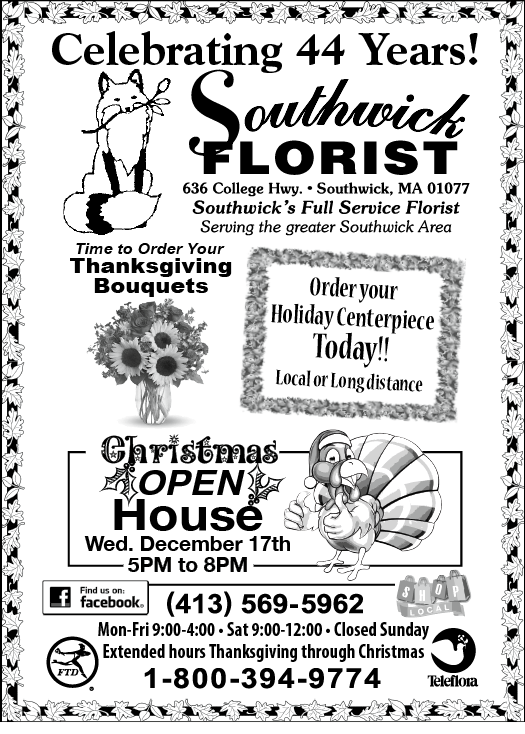







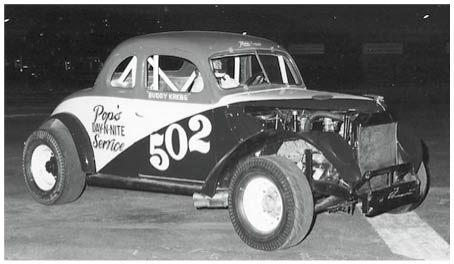
Speedway Memories
Riverside and the Easter States Exposition
Bill Greco’s #22 Car taken in 1962 at
Riverside Park Speedway
Top: #711 Car driven by Bob Polverari
Bottom: #502 Car driven by Buddy Krebs






Some unique sides, desserts, and stuffings for the holidays

Cornbread Pecan Stuffing
In large skillet, cook celery, green pepper, onion, poultry seasoning and sage in butter until tender. In large bowl, dissolve bouillon in water. Add celery mixture, stuffing mix, pecans and eggs; mix well. Loosely stuff turkey just before roasting or place stuffing in greased baking dish. Bake at 350° F for 30 minutes or until hot. Refrigerate leftovers. Makes about 2 quarts.
1 cup chopped celery
1 cup chopped green pepper
1 cup chopped onion
1-1/2 tsp poultry seasoning
1/4 tsp rubbed sage
1/2 cup butter
2 cups boiling water
1 Tbsp chicken-flavor instant bouillon OR 3 chicken-flavor cubes
16 oz pkg cornbread stuffing mix
1 cup chopped pecans
2 eggs, slightly beaten

Mixed-Fruit Stuffing
If prunes have pits, remove and discard. In 2-quart saucepan over high heat bring 2 cups water, fruit and onion to boiling. Reduce heat to low; simmer 15 minutes or until fruit is tender; pour mixture into large bowl.
In same pan over medium heat bring 1/4 cup water, cranberries and sugar to boiling. Reduce heat to low; simmer 7 minutes or until berries pop, stirring occasionally. Drain liquid from berries. Add remaining ingredients; toss lightly.
12-oz package mixed dried fruit, cut in pieces
water
1 medium onion, minced
1 16-oz package cran-berries
1 cup sugar
5 cups lightly packed, day-old bread cubes
1 tsp salt
1/2 tsp ground all-spice
Spinach or Broccoli Casserole
Saute onion in butter. Mash cream cheese and add to it the onion, spinach or broccoli, beaten egg, bread crumbs, salt and pepper. Put in buttered quart casserole. Sprinkle with paprika and dot with a little butter. Bake at 350’ for 30 minutes. Serves 3 to 4. Note: May be made and refrigerated before hand and reheated.
1 small chopped onion
2 Tbsp butter
1 pkg. frozen spinach or broccoli, thawed and drained
1 (3 oz.) pkg. cream
cheese
1 egg, beaten
1/4 cup bread crumbs or fine stuffing mix
butter (for top)
salt, pepper, paprika
Maple Acorn Squash
Preheat oven to 350° F. Place squash and water in 15x10-inch jellyroll pan; cover with aluminum foil. Bake 35 minutes; drain. Combine remaining ingredients; brush squash with pure maple syrup mixture. Bake uncovered 25 minutes, brushing frequently with pure maple syrup mixture. Refrigerate leftovers. Makes 6 to 8 servings
2 acorn squash, cut horizontally into 1/2-inch rings, remove seeds and membrane (about 2 1/2 lbs)
1/2 cup water
1 cup pure maple syrup
2 Tbsp but er, melted
1 Tbsp cornstarch
2 tsp grated orange rind 1/2 tsp ground cinnamon 1/ 4 tsp ground nutmeg

Maple Pumpkin Pie
Preheat oven to 425° F. In large mixer bowl, combine all ingredients except pastry shell and 2 tablespoons pure maple syrup; mix well. Pour into pastry shell. Bake 15 minutes. Reduce oven temperature to 350° F; bake 25 to 30 minutes longer or until knife inserted near edge comes out clean. Cool; brush with remaining 2 tablespoons pure maple syrup. Serve with Maple Whipped Cream. Refrigerate leftovers.
Maple Whipped Cream: In small mixer bowl, beat 1 cup (1/2 pint) whipping cream and 1/4 cup pure maple syrup until stiff. Refrigerate leftovers. Makes about 2 cups
9-inch unbaked pas-try shell
16 oz can pumpkin
1 cup half-and-half OR coffee cream
3 eggs, slightly beaten
1 tsp groundcinnamon
1/2 cup plus
2 Tbsp pure maple syrup
1/3 cup packed light brown sugar
1/2 tsp ground ginger
1/2 tsp groundnutmeg
Cornbread Casserole
In a large bowl, combine all ingredients. Pour into a greased 11 inch x 7 inch x 2 inch bak-ing dish. Bake, uncovered, at 400° for 25-30 minutes or until the top and edges are golden brown. Serves 4 to 6.
1 can (15-1/4 oz.) whole kernel corn, drained
1 can (14-3/4 oz.) cream-style corn
1 package (8-1/2 oz.) corn bread/muffin mix
1 egg
2 tablespoons butter or margarine, melted
1/ 4 teaspoon garlic powder
1 / 4 teaspoon paprika

Pear Cake
Cream together sugar and oil. Add eggs, one at a time, mixing well after each addition. Set aside. Sift flour with cinnamon, salt and soda 3 times, then add to creamed mixture. Stir in vanilla; mix. Add coconut, date, pears, and pecans, stirring by hand (batter will be thick.) Pour into a greased and floured fluted tube pan. Bake at 325 ° for 1-1/2 to 2 hours or until cake tests done. Cool on rack until cake shrinks from sides of pan; remove from pan to cool completely. Yield: 16 servings.
2 cups sugar
1-1/2 cups vegetable oil
3 eggs
3 cups all-purpose flour
1 tsp. cinnamon
1 tsp. salt
1 tsp. baking soda
2 tsp. vanilla
2 cups flaked coconut
1 cup chopped dates
3 cups fresh or canned pears, drained and chopped
1 cup pecans, chopped










November 1982





Gratitude with Boundaries
Thankfulness Without Comparison
By Dr Simone Phillips, Psychologist

A Psychologist’s Guide
Inside the Young Mind:

By Michael Dubilo
Susanna and I enriched our time walking the grounds of New England’s largest state fair this September. For three days, we arrived early—7:30 AM sharp. Traveling and parking ahead of the crowds spared us the stress of navigating through anxious fairgoers. Susanna’s Parkinson’s qualifies her for handicap parking, a tremendous help. To make mobility easier, we designed and built an el-evated handle for her wheelchair, allowing Mike, the “pusher,” to remain upright as we glided free-ly across the expansive fairgrounds.
One of our favorite stops is the Mallary Com-plex, where cows, sheep, goats, and llamas await curious visitors. The caretakers, often entire fami-lies, are active and engaging. We witness lessons in hard work and purpose. Children, teens, and parents all play roles in feeding, cleaning, milk-ing, and grooming their animals. Teenage girls milk goats with smiles on their faces—no phones, no screens—just meaningful responsibility. What a model for young people: be involved, be busy, and respecting elders.
Agricultural folks tend to be kind, consider-ate, and full of love for animals and people alike. Susanna, drawn to the majestic beauty of a curly-haired llama, was gifted a moment of joy when the owner handed her the leath-er lead. Another un-forgettable moment came when a woman noticed Susanna in her wheelchair and gently placed a six-day-old lamb in her lap. The lamb nestled close and licked her cheek with motherly affection. Smiles bloomed all around. A photo was taken. A memory etched in gratitude.
We made our way to the New England building to mingle with Connecticut’s fife and drum com-munity—a special connection for Susanna, who grew up in Deep River, where the annual muster parades right past her childhood home. We were embraced by friend Vicky, a Major in the Essex Sailing Masters, who wrapped her arm around Susanna with affection. A photo captured the mo-ment, but the love didn’t stop there. A drummer from Deep River placed his drum on Susanna’s lap, strapped it around her shoulder, and said, “All yours, my fair lady—beat that drum.”
At Storrowton Village, we settled in to hear Freddie Marion, a musician Susanna admires deeply. Freddie, based in Holyoke, Massachusetts, discovered music young—it gave him identity and belonging. Before the show, I asked if he’d visit Susanna, who was seated in the grassy viewing area. Without hesitation, Freddie walked with me to meet her. Surprise and joy lit up her face. After a warm conversation, he hugged her and kissed her cheek. Talented, gracious, and cool—Freddie made her day.
Our energetic friend Joan led us to the center stage to see Chubby Checker. We pushed and glid-ed to the front of the crowded arena. At 83, Chubby radiates experience, energy, and talent. He spotted Susanna’s glowing smile and moved to shake her hand. Her star-struck eyes sparkled with joy. Dur-ing his performance, he encouraged everyone to dance—a perfect invitation for aerobic movement. Chubby knows how to stir peaceful excitement.
We also reconnected with dear friends Dana Cushman and her husband Lenny, owners of Iron Horse Farm in Bradford, Rhode Island. They care for nine magnificent Belgian horses and show them at the fair. Our bond began years ago and has only deepened. Susanna and I cheer them on during competitions in the Coliseum. From our accessible seating, just feet from the galloping horses, we take in the awe-inspiring sight. Dana, strong and graceful, embraced Susanna with tears in her eyes—a woman of compassion and humili-ty, devoted to the well-being of horses and people. As Proverbs teaches: “The righteous care for the needs of their animals.”
We are thankful for the blessings Susanna re-ceived during our three-day excursion at the Big E. These moments weren’t just joyful—they were restorative. One lasting takeaway was watching the Clydesdale horses walk each morning for 30 minutes. That image now lives in Susanna’s mind as she exercises. Like the Clydesdales, she moves forward daily, regardless of weather or challenge. For those living with Parkinson’s, physical activity is vital.
Let us all be encouraged to move our bodies as best we can. Visualizing those majestic horses may stir a desire to pursue health with purpose. When body, mind, and spirit are engaged, the benefits are abundant.
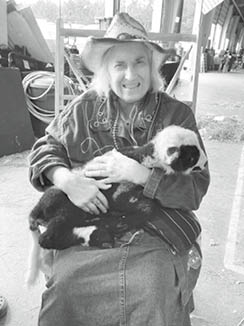



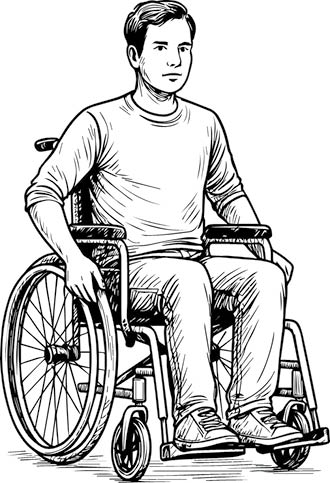
Someone in a wheelchair once said to me, “The only difference between you and me is you can see my disability.” He said, “Everybody has a disability. Some are just more visible than oth-ers.” So, let me encourage you to take your eyes off your disability and put your eyes on God’s ability!
I heard about a young man named Trenton. Trenton is 23 years old, and he has cerebral pal-sy. Every Sunday, he is a greeter at his church. Everybody says his energy and his joy are con-tagious.
One Sunday his pastor preached a sermon about God commanding Gideon to “Go in the strength you have.” All of a sudden, a thought hit Trenton like a lightning bolt. He said, “I have a disability. That’s how people define me: I’m disabled. But God said, ‘Go in the strength you have,’ and I realized something. If you take the word disable and put “Go” in front of it, it spells God is able.” Trenton said, “Even though I may be limited from a human perspective, God is able to do great things through my life.”
That’s a powerful thought. Trenton may have a physical limitation, but he has developed in-credible spiritual strength. How about you? We all have our own disability – some are just more visible than others. Do you focus on your dis-ability? Or do you focus on God’s ability?
I’m the guy who showed up in your life to tell you this: God is able to do great things through your life! Maybe … just maybe … God is going to use you in a way that no one saw coming!
Let me show you a man that God used in a way that no one saw coming. Let’s turn to the Bible … And let me in-troduce you to a man named Ehud.
Ehud’s story is not usually taught in church, and there’s a reason for that. It’s really cool – but it’s really gruesome. It’s not a Bible story you want to read while eating your Sunday Dinner!
At the time Ehud came on the scene, Israel had been under the control of the nation of Moab for 18 years. So, every year they had to pay a tribute to Moab, and Ehud was the man in charge of carrying this tribute to the Moabite king, King Eglon.
The first thing the Bible tells us is that Ehud was left-handed. That’s an important detail. Be-cause in that culture, left-handed people were not allowed to be soldiers. Being left-handed was considered a handicap, a disability.
Ironically, Ehud was from the tribe of Benja-min. Benjamin literally means “Son of My Right Hand.” So, in a sense, Ehud didn’t fit into his own tribe, and he didn’t fit the mold of a war-rior.
But Ehud must have been fed up with Moab’s domination, so he decided to take matters into his own hands. Into his left hand, to be precise.
When it came time to take the tribute to the king, he built a home-made 18-inch-long dag-ger. He then hid that dagger under his cloak, strapped against his right thigh.
Then he went to meet with the king, who the Bible specifically mentions was a very fat man. Imagine Luke Skywalker confronting Jabba the Hutt!
After Ehud turned over the payment, he told the king he had a secret message for him. So, the king ordered everyone out of the room. As Ehud came close to the king, as if the whisper in his ear, he reached across his body with his left hand, pulled out the dagger, and thrust it deep into the king’s stomach. The king never saw it coming because it came from the left.
This is where the story gets really gory. The Bible says that the king was so fat that the fat of his big belly closed up over the dagger, swal-lowing it entirely.
Ehud then locked the door and snuck out of the room. How? Apparently by crawling out through the king’s private toilet, which emptied into a chamber pot on the ground below. Then he escaped unseen. They might have smelled him, but they never saw him make his escape!
He then went out and raised up an army, led a revolt, and freed the Israelites from Moab’s power for the next 80 years!
Why am I telling you all this? Not to ruin your appetite for your appetite, but to make a point …
God often does things in unlikely ways.
In a way no one saw coming. In a moment no one expected. Using someone no one thought could do it.
God did it back then and He still does it to-day!
Why, I’ll never forget the Great Recession and how our church struggled financially. One time it got so bad I didn’t know how we could possibly pay all our workers their paychecks. It came down to the wire. I knew that if we didn’t come up with $15,000 in the next 24 hours, we were not going to make payroll. $15,000! Where would we get an amount that big … in that short of time?!
That afternoon, a couple popped in to see me unexpectedly. They didn’t make an ap-pointment. It just seemed kind of random. They said, “Jeff, we received an unexpected inheri-tance, and we just wanted to give our tithe to the church. We were so excited about this, so we didn’t want to wait until Sunday to put it the of-fering plate.” They handed me a plain white en-velope. Inside was a check for exactly $15,000. I never saw it coming! It was like God handed it to me with His left hand … while I was looking to the right!
Now, here’s what’s remarkable. That check had to reach us just in time. So, before we even knew we had a need, God had life insurance contracts being signed, money moving through accounts, checks being mailed, hearts being moved – all of it with precision timing.
Who is able to do something like that? God is able. Who is able to time it just perfectly? God is able. Who is able to make payroll in the middle of a recession? God is able. And I’ll say it again, with a wink and a nod: God often does things in unlikely ways. In a way no one saw coming. In a moment no one expected. Using someone no one thought could do it.
Maybe you’re facing some tough challenges, and you can’t see how it’s going to work out. Maybe God is about to surprise you! Maybe this is the week! Maybe you’re looking to the right… and God is about to surprise you from the left.
Maybe you’re in a tough season of your life right now. Maybe this next week is going to be a killer. But like Trevor with cerebral palsy, you’re not focused on your disability, you’re fo-cused on God’s ability. Like Ehud, God is going to do something through your life that no one saw coming. While you’re looking to the right, God is coming from the left.
If you’re under a lot of pressure today, don’t give up! Look up! God often does things in an unlikely way. In a way no one saw coming. In a moment no one expected. Using someone no one thought could do it. .











God is Able


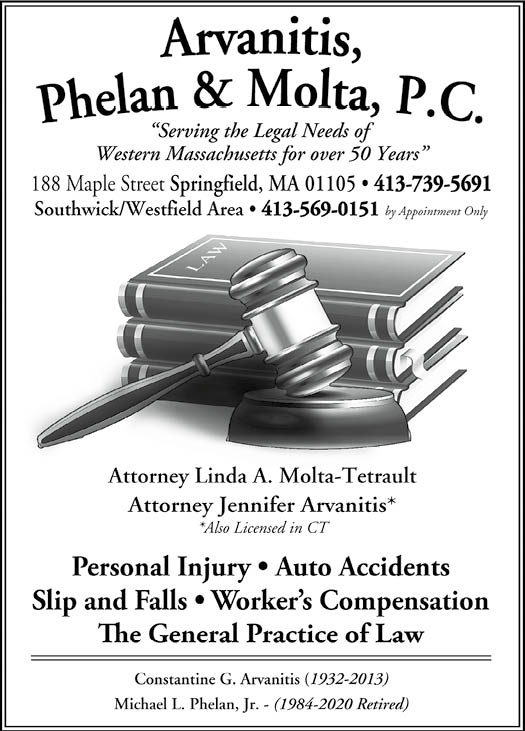



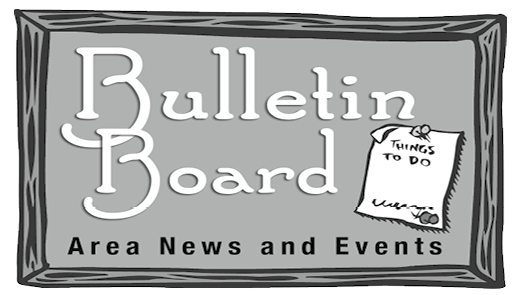
To include your event, please send information by the 1st of the month. We will print as many listings as space allows. Our usual publication date is around the 10th of the month. Email to: magazine@southwoods.info.
Southwick Congregational Church
Holiday Concert
December 5th: Westfield, MA — Southwick Community Episcopal Church is sponsoring the fourth annual holiday concert: “The Journey: From Blues to Advent to Christmas” at 7:00 pm on Friday, December 5th. The concert, featuring soulful blues and festive holiday music, will be in the Southwick Congregational Church at 488 College Highway. While the concert is a free event, donations are requested to support Our Community Food Pantry. Refreshments will be served, and recorded music will be for sale. Everyone is welcome to enjoy this evening of excellent music!
YMCA Westfield
Health and Wellness Day
November 22nd Westfield, MA — Bring the whole family for a fun filled day focused on fitness, well-being, and community. Enjoy interactive activities, wellness resources, and energizing workouts for all ages. Whether you’re looking to get active, learn something new, or just have a great time together - there’s something for everyone! Schedule is availbale online and will feature Cycling, yoga, Saturday strength, youth strength, zumba, youth & adult swordfit, and trx.
Southwick Congregational Church
Call for Crafters
Southwick, MA — The Southwick Congregational Church in Southwick, MA will be having their annual Holly Bazaar on Saturday, December 6, 2025 from 9:00 AM – 3:00 PM. This is a call for CRAFTERS who are interested in being a part of this community event. To rent table space and receive a registration form, please call the church office at 413-569-6362, or see the website at SouthwickUCC.org.
Copper Hill United Methodist Church
Holiday Bazaar
November 22nd: Granby, CT — Join us for our annual Holiday Bazaar on Friday November 21, 2025 from 1pm - 4pm and Saturday November 22, 2025 from 9am - 3pm at Copper Hill United Methodist Church 27 Copper Hill Road East Granby, CT. We will have loads of hand- crafted items, a “White Elephant “ table, as well as great baked goods to choose from! A soup luncheon will be offered Saturday from 11 - 2 pm
Southwick Boys Scouts, Cub Scouts and Girl Scouts
Scouting For Food
November 1st: Southwick, MA — Invite you to join us in supporting our neighbors through our annual food drive to benefit Our Community Food Pantry Saturday, November 22nd We will be coming through your Southwick neighborhood to collect donated food. Please place your non-perishable food donation in a bag and leave near your mailbox or curb (visible from the street) by 9:00 am. Or drop off your donation at the Food Pantry before noon. Kindly no expired food. Monetary donations are also immensely helpful! Donate directly to the Pantry Online paypal link @ Donate https://www.ourcommunityfoodpantry.org
Thank you for your continued support of our Neighbors in Need! Proudly Serving Our Community, The Scouts of Southwick
St. Joseph’s National Catholic Church
Stuffed Pork Roast Dinner
November 16th: Westfield, MA — St. Joseph’s National Catholic Church at 73 Main Street in Westfield is hosting a community Stuffed Pork Roast Dinner on Sunday, November 16th at 12 noon. Dinner will feature tender Stuffed Pork Roast, along with Apple Sauce, Glazed Carrots and Mashed Potatoes. The featured dessert will be fresh homemade Pumpkin Pie topped with Whipped Cream. Included beverages are Coffee, Apple Cider, and Bottled Water. Everyone is welcome!
Tickets are $18 for adults and $10 for children 12 and under. To purchase tickets and reserve your place, text or telephone Cliff at (413) 977-2007, and if leaving a message, provide your name and telephone number. Take-Out/Meals-To-Go will also be available for pick-up at 12:30pm. When ordering tickets, indicate if dinners are To-Go. The deadline for purchasing tickets is November 12th. Everyone is invited!
Wyben Union Church
Christmas Craft Fair
December 6th: Westfield, MA — Mark your calendars the beloved Wyben Christmas Craft Fair is making its festive return on Saturday, December 6th, and you’re invited to celebrate the season in style! From 9:00 a.m. to 3:00 p.m., Wyben Union Church (678 Montgomery Road, Westfield) will be transformed into a holiday marketplace brimming with handcrafted treasures and seasonal treats. It’s the perfect spot to find one-of-a-kind gifts made with heart. The local 4-H Club will also be on hand, offering their ever-popular fresh evergreen wreaths.
Come hungry! The kitchen will be serving up its famous corn chowder luncheon, and a mouthwatering array of home-baked goodies are for sale to satisfy every sweet tooth. Even better? Every bite and every raffle ticket helps make a difference. All proceeds from the kitchen, baked goods, popcorn, raffle sales, and vendor space rentals will go directly to benefit a local charitable organization. So bring your friends, your appetite, and your holiday spirit. We can’t wait to welcome you back to Wyben for a day of shopping, snacking, and giving back!



10-5
COUNTRY PEDDLER
CLASSIFIEDS
GOODS & SERVICES
DELREO HOME IMPROVEMENT for all your exterior home improvement needs, ROOFING, SIDING, WINDOWS, DOORS, DECKS & GUTTERS extensive references, fully licensed & insured in MA & CT. Call Gary Delcamp 413-569-3733
RECORDS WANTED BY COLLECTOR - Rock & Roll, Country, Jazz of the 50’s and 60’s All speeds. Sorry - no classical, showtunes, polkas or pop. Fair prices paid. No quantity too small or too large. Gerry 860-402-6834 or G.Crane@cox.net
GOODS & SERVICES

Lakeside Property management - For all your landscaping needs. Mowing, new lawn installs, sod, mulch/stone installation, bush trimming, retaining walls, snow plowing/removal, etc. Serving Southwick, Suffield, Granby, Agawam, Westfield, Simsbury. Residential and commercial. Call Joe 413-885-8376. Give us a call and let us get that property looking the way you want it! Now accepting major credit cards.
The granby motel- 551 Salmon Brook Street Granby, CT 06035. Room for rent, weekly, daily, & monthly. Wifi available. Stove, Refrigerator, Kitchen. LONG TERM RENTAL AVAILABLE AT AFFORDABLE PRICE. Ask for Mike Shaw. 860-653-2553
St. Jude’s Novena - May the sacred heart of Jesus be adored, glorified, loved and preserved throughout the world now, and forever. Sacred Heart of Jesus pray for us. St. Jude, Worker of Miracles, pray for us. St. Jude, Helper of the Hopeless, pray for us. Say this prayer 9 times a day. By the 8th day your prayer will be answered. It has never been known to fail. Publication must be promised. Thank you St. Jude. ..- MM
St. Jude’s Novena - May the sacred heart of Jesus be adored, glorified, loved and preserved throughout the world now, and forever. Sacred Heart of Jesus pray for us. St. Jude, Worker of Miracles, pray for us. St. Jude, Helper of the Hopeless, pray for us. Say this prayer 9 times a day. By the 8th day your prayer will be answered. It has never been known to fail. Publication must be promised. Thank you St. Jude. ..- DG
St. Jude’s Novena - May the sacred heart of Jesus be adored, glorified, loved and preserved throughout the world now, and forever. Sacred Heart of Jesus pray for us. St. Jude, Worker of Miracles, pray for us. St. Jude, Helper of the Hopeless, pray for us. Say this prayer 9 times a day. By the 8th day your prayer will be answered. It has never been known to fail. Publication must be promised. Thank you St. Jude. ..- PL









